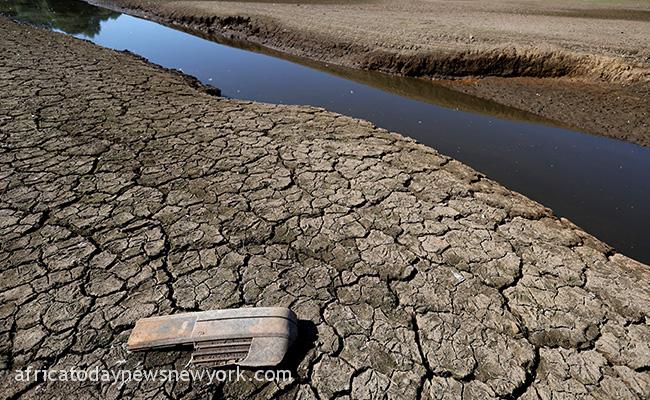The government of the UK on Friday officially declared a drought in several parts of England, Africa Today News, New York reports that this move is coming on the heels of months of record low rainfall and unprecedented temperatures in recent weeks.
The government’s Environment Agency announced at a National Drought Group meeting that the “drought trigger threshold has been met” in portions of the southwest, southern, central, and eastern England.
Africa Today News, New York reports that the last time a drought was formally declared in England was sometime in 2018.
In a report released by the Environment Agency on Friday, it was said that England as a whole saw its driest July since 1935.
The unusual weather occurs as France battles massive wildfires and a record-breaking drought.
The Met Office, the UK’s meteorological authority, said the period from January to June this year saw the least rainfall in England and Wales since 1976.
Read Also: Drought: UN To Work On Initiatives To Increase Preparedness
Rationing of water and the usage of roadside standpipes were among the severe measures implemented that summer.
According to a government statement, the decision to declare a drought was based on variables like rainfall, river flows, groundwater levels, reservoir levels, and their effects on the public water supply.
“We urge everyone to manage the amount of water they are using in this exceptionally dry period,” National Drought Group chair, Harvey Bradshaw, was quoted as saying.
The Environment Agency and water companies “will step up their actions to manage impacts” and press ahead with their published drought plans, including things like hosepipe bans.
It stressed that “essential supplies of water are safe.”
England and parts of Wales are severely parched and some water companies have already announced hosepipe bans.
The UK overall had 56 percent of its average rainfall for July. Every month of the year except February has been drier than average, according to the Met Office.
Temperatures were expected to hit the mid-30s Celsius, peaking on Friday and the weekend, after which showers and thunderstorms were forecasts.
Temperatures were not expected to hit the record levels seen in July when a temperature of 40.3 Celsius was recorded in Lincolnshire in northeastern England on July 20, during an unprecedented heatwave.
The National Climate Information Centre said that such high temperatures in the UK were only possible due to human-induced climate change.

